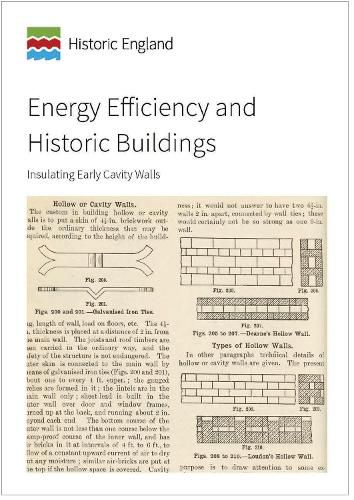Energy Efficiency and Historic Buildings: Insulating Early Cavity Walls

Energy Efficiency and Historic Buildings: Insulating Early Cavity Walls
This guidance note provides advice on the principles, risks, materials and methods for improving the thermal performance of buildings built with early forms of masonry cavity walls dating from before the Second World War.
Builders and architects started to experiment with cavity or ‘hollow walls’ from early in the Victorian period. By the first decade of the 20th century, most pattern books for houses included examples of outer walls with two separate leaves of brickwork. Initially the development of the hollow wall was to provide as much protection as possible from the elements, especially driving rain, together with enhanced stability and economy of materials. These types of wall first appeared in exposed areas, particularly coastal locations.
Since the energy crisis of the early 1970s it has become common to fill or partially fill the cavity with a variety of insulation materials to reduce the heat loss through the wall. Modern cavity walls (post-Second World War) often provide a good opportunity to improve thermal performance with cavity insulation. Such insulation is invisible, cheap and quick to install, with no reduction to room sizes. However, cavity insulation is not generally suitable for all cavity walls particularly those classed as ‘early cavity walls’.
The performance of early cavity walls will differ from that of later cavity walls and these differences need to be taken into account when considering the addition of insulation. However, some early cavity walls can be insulated using cavity insulation and this guidance discusses how to determine whether any particular wall is suitable. For some early cavity walls, cavity fill insulation will always be unsuitable and the construction needs to be treated as a solid wall, insulated either internally or externally or not at all.
This guidance forms one of a series of thirteen guidance notes covering the thermal upgrading of building elements such as roofs, walls and floors.
This item is not currently in-stock. It can be ordered online and is expected to ship in approx 4 weeks
Our stock data is updated periodically, and availability may change throughout the day for in-demand items. Please call the relevant shop for the most current stock information. Prices are subject to change without notice.
Sign in or become a Readings Member to add this title to a wishlist.


